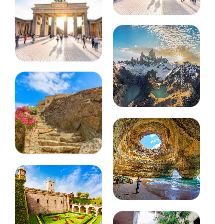Visiting Cassis: 12 not-to-be-missed things to do
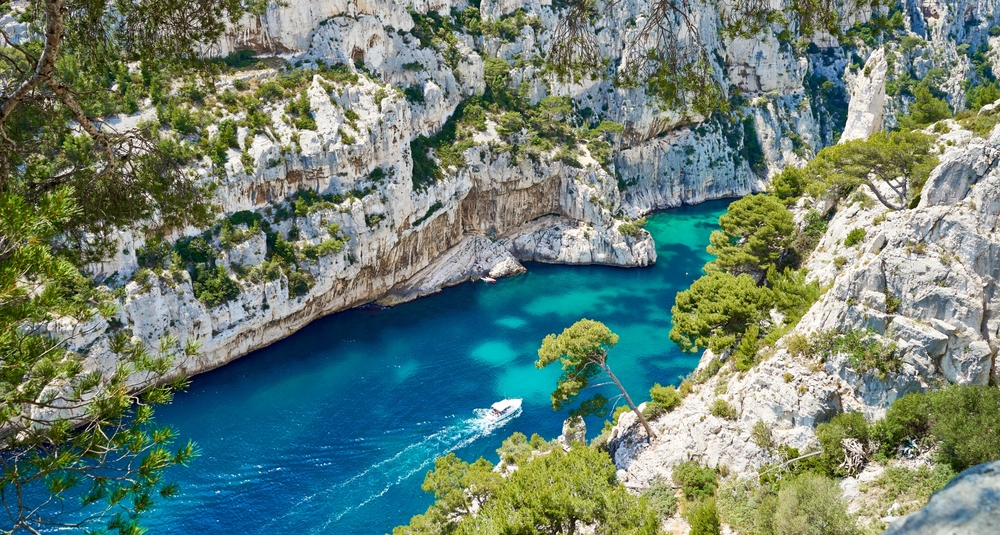
Nestling between the turquoise waters of the Mediterranean and the majestic cliffs of Cap Canaille, Cassis is a real gem on the Côte d’Azur. This charming commune in the Bouches-du-Rhône department, just 20 kilometres from Marseille, is renowned for its Provencal authenticity, its spectacular calanques and its exceptional wine-growing heritage. Whether you’re a hiking enthusiast, a food lover or simply looking for a change of scenery, Cassis will win you over with the diversity of its attractions. Get ready to discover the 12 must-do experiences that will make your stay an unforgettable one in this Mediterranean gem.
200 audioguided tours for cities all around the world
Download1. Explore the majestic creeks of Port-Miou, Port-Pin and En-Vau
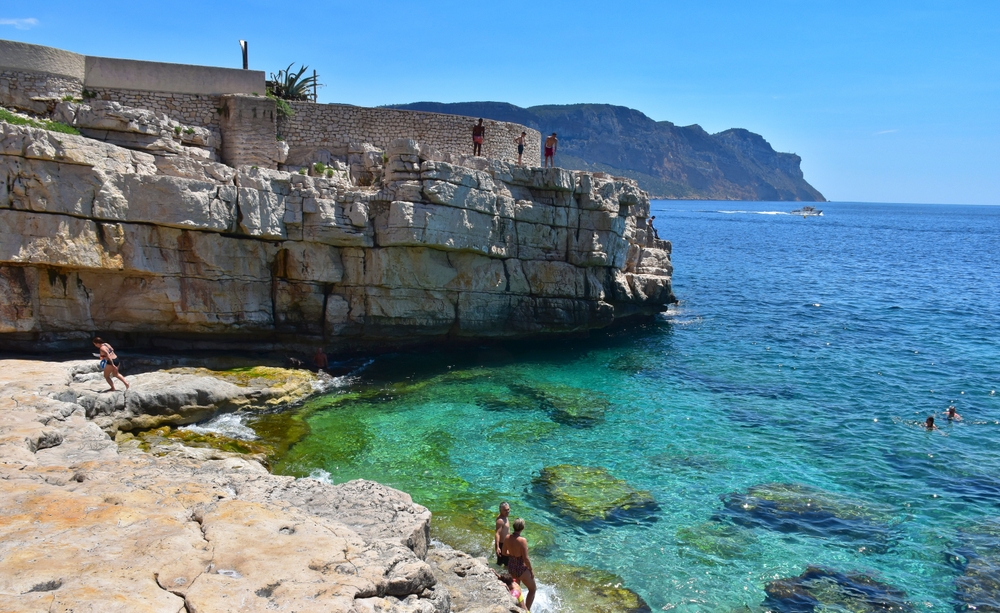
The calanques are undoubtedly the star attraction of Cassis. These unique geological formations, listed as a UNESCO World Heritage Site, offer breathtaking scenery. The Port-Miou calanque, the most accessible from the town centre, welcomes you with its deep blue waters framed by white limestone cliffs. This former quarry, used for the construction of the Suez Canal, now boasts a natural harbour of striking beauty.
The more intimate Port-Pin cove, with its small beach of fine pebbles and umbrella pines, gives it its name. Finally, the mythical En-Vau cove, considered the most beautiful, rewards the bravest hikers with its crystal-clear waters and imposing white limestone cliffs. The effort of the walk (around 1h30 from the car park) is amply rewarded by an imposing natural spectacle. For a complete discovery of the region, don’t hesitate to also explore Marseille and its rich heritage with its audio-guided tour.
2. Stroll around the picturesque fishing port with its colourful facades
See also the Marseille guide :
- The most beautiful creeks in Marseille and Cassis
- The most beautiful villages to discover around Marseille
- Best straw huts around Marseille
The heart of Cassis beats to the rhythm of its traditional fishing port, a veritable living postcard of Provence. The pastel facades of the fishermen’s houses – ochre, pink, yellow and blue – are reflected in the calm waters of the harbour, creating a picture of perfect harmony. In the morning, watch the return of the pointus, the traditional fishing boats, as they unload their precious cargo on the bustling quayside.
The terraces of cafés and restaurants line the harbour, inviting you to pause and contemplate the ballet of pleasure boats. It’s here that the soul of Provence is fully revealed, between an impromptu game of pétanque and the passionate discussions of the locals. The Port de Cassis (13260 Cassis, rated 4.5/5 on Google out of 1276 reviews) is the ideal starting point for exploring the town and surrounding area.
3. Climb the mythical Cap Canaille and its breathtaking cliffs
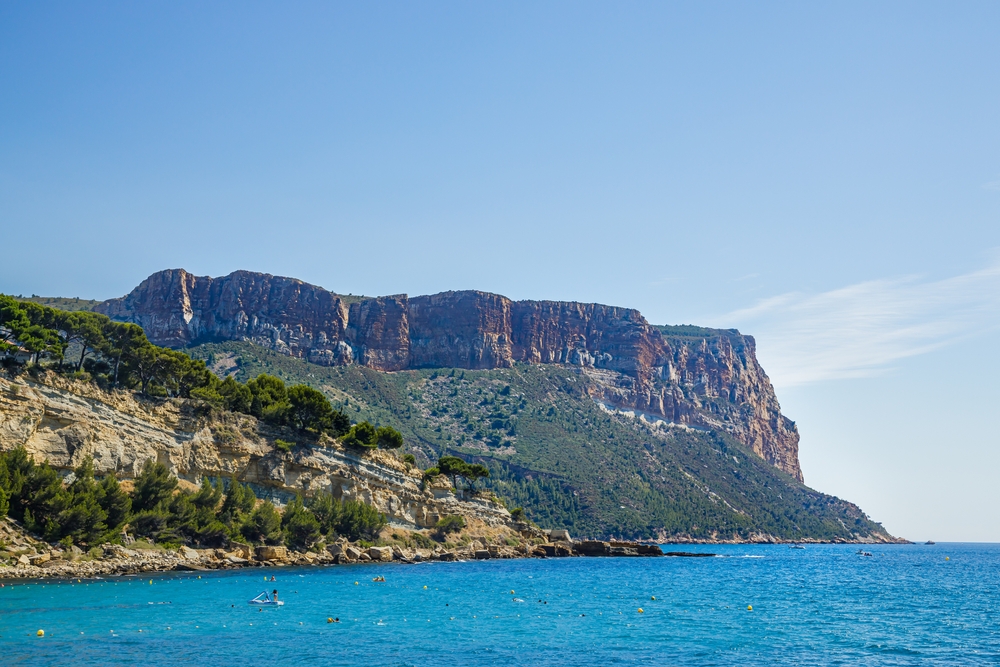
Dominating Cassis from a height of 394 metres, Cap Canaille offers one of the most spectacular panoramas on the French Mediterranean coast. These red limestone cliffs are among the highest in Europe and a real challenge for hiking and climbing enthusiasts. The path to the summit rewards hikers with breathtaking views of the calanques, the bay of Cassis and, on a clear day, as far as the Frioul islands.
The Route des Crêtes, which winds its way along Cap Canaille to La Ciotat, is one of the most breathtaking coastal roads in France. This 13-kilometre panoramic route offers breathtaking views of the Grande Bleue and the Provencal countryside. Several belvederes have been set up for memorable photo breaks. Cap Canaille (13260 Cassis, rated 4.9/5 on Google out of 150 reviews) is accessible by car or on foot, depending on your level of fitness.
4. Discover the vineyards and taste the famous AOC Cassis white wine
Cassis is renowned not only for its landscapes, but also for its exceptional wine-growing terroir. The AOC Cassis appellation, created in 1936, covers just 220 hectares divided between 12 family estates. Cassis white wine, made mainly from Marsanne and Clairette grapes, develops unique aromas thanks to the region’s Mediterranean climate and limestone soils.
Take advantage of your stay to visit one of the local wine estates and discover the secrets of this nectar with its floral and mineral notes. Château de Cassis, Clos Sainte-Magdeleine and Domaine du Bagnol all welcome you for guided tastings in an idyllic setting overlooking the sea. These wines go perfectly with local bouillabaisse and seafood, creating a typically Provençal harmony of flavour.
Download the audio tour to discover Marseille on foot and on your own
Complete your discovery of the region by exploring Marseille with its interactive audio tour. The city, easily accessible from Cassis, will reveal 24 points of interest with commentary and local anecdotes for a complete experience of Mediterranean Provence.
5. Relax on the beaches of Grande Mer and Bestouan
Cassis offers several beaches with very distinct characteristics to suit all tastes. The Grande Mer beach, located in the heart of the commune, is the main beach with its 200 metres of fine sand mixed with pebbles. Easily accessible from the harbour, it has all the facilities you need: restaurants, deckchair hire and water sports activities. Its exceptional setting, dominated by the ancient castle perched on the cliff, makes it a great place to swim.
Bestouan beach is wilder and less crowded, appealing to lovers of tranquillity. This pebble beach near the Port-Miou cove offers a more authentic setting with its crystal-clear waters. Plage du Bestouan (Avenue des Calanques, 13260 Cassis, rated 4.1/5 on Google for 80 reviews) also offers easy access to the hiking trails leading to the calanques. For a more private experience, discover the small coves accessible only on foot along the coastal path.
6. Explore the authentic flavours of Provençal markets
The art of Provençal living can be savoured to the full at the colourful markets in Cassis. Every Wednesday and Friday morning, the Place Baragnon comes alive at 8am with the traditional market. The stalls are bursting with local produce: sun-drenched fruit and vegetables, black olives from Nyons, local goat’s cheese, lavender honey and intoxicatingly fragrant Provencal herbs.
Local producers mingle with craftspeople offering olive oil soaps, Provencal santons and Provencal fabrics. The warm, friendly atmosphere means you can chat with the shopkeepers, who will be happy to share their culinary tips and anecdotes. The Marché de Cassis (Place Baragnon, 13260 Cassis, rated 3.8/5 on Google for 80 reviews) is an authentic cultural experience, the perfect complement to your discovery of the region.
7. Take a boat trip for a unique view of the calanques
Discovering the calanques from the sea offers a totally different and often more accessible perspective than hiking on land. Several companies offer boat trips departing from the port of Cassis, allowing you to admire the limestone cliffs from the turquoise waters. These maritime excursions reveal inaccessible coves on foot and offer spectacular views of the rock formations.
Tours vary from an hour for the three nearby calanques (Port-Miou, Port-Pin, En-Vau) to half a day to explore as far as the Marseille calanques of Morgiou and Sugiton. Some excursions include swimming stops in the crystal-clear waters or snorkelling breaks to discover the richness of the Mediterranean seabed. This maritime approach also allows people with reduced mobility or families with young children to enjoy the beauty of the calanques without any physical effort.
8. Explore the historic centre and its cobbled streets
The charm of Cassis is not limited to its exceptional coastline. The historic centre, with its cobbled streets and Provençal houses, tells the story of this seaside town that dates back thousands of years. Stroll along rue de l’Arène or montée du Château to discover the typical architecture with its ochre facades and colourful shutters. The shady squares invite you to take a stroll, particularly the Place Baragnon, the beating heart of the town.
The 18th-century church of Saint-Michel is well worth a visit for its Provencal architecture and works of art. The remains of the medieval castle, perched on its rocky outcrop, majestically dominate the commune and bear witness to Cassis’ defensive past. Local craft shops, art galleries and designer workshops line the picturesque streets, offering the chance to take home an authentic souvenir of your visit.
9. Water sports in crystal-clear waters
The exceptionally clear waters of Cassis are ideal for a variety of water sports. Sea kayaking lets you explore the calanques on your own, gliding silently along the limestone cliffs to discover secret coves otherwise inaccessible. This activity, which is accessible to beginners and experienced kayakers alike, gives you total freedom to explore the wonders of the Cassis coastline at your own pace.
Scuba diving reveals the hidden treasures of the Mediterranean seabed. Local diving centres offer first dives for novices and explorations for experienced divers to unspoilt sites with exceptional flora and fauna. Paddle-boarding, a more recent but very popular activity, combines sport and discovery in an idyllic setting. These activities can be combined with your exploration of the region, in particular with the discovery of Marseille and its heritage.
10. Enjoy Provençal cuisine in the port’s restaurants
Cassis gastronomy draws its flavours from the generosity of the Mediterranean and ancestral Provencal traditions. Bouillabaisse, the Marseilles speciality adopted by Cassis, is particularly tasty thanks to the freshness of the local fish. The port’s restaurants serve this legendary fish soup with its rouille and garlicy croutons, creating an unforgettable symphony of flavours.
Seafood plays a key role in local cuisine, with purple sea urchin eaten raw, grilled sea bream with Provençal herbs, and monkfish bourride with sun vegetables. Pied-packets, a typically Marseillaise speciality, sit alongside black olive tapenade and anchoïade on the menus of authentic establishments. These delicacies go perfectly with AOC Cassis white and rosé wines, creating perfectly harmonious food and wine pairings under the Provencal sun.
11. Hike the coastal path to La Ciotat
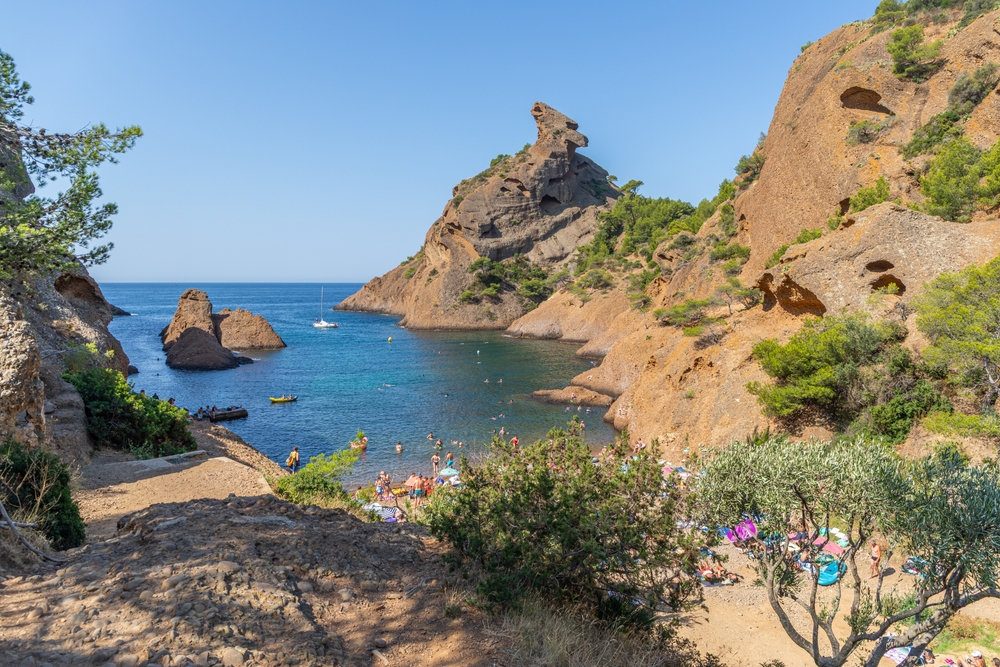
The coastal path, also known as the GR 51, links Cassis to La Ciotat along the coast for around fifteen kilometres. This exceptional hike, of moderate level, reveals coastal landscapes of striking beauty. The route alternates between ledge sections offering breathtaking panoramas of the sea and descents to hidden coves with turquoise waters.
Allow around 5 hours to complete the entire route, with plenty of opportunities to stop and swim in the wild creeks. The trail passes through some remarkable sites, including the Port-Pin cove and the Soubeyranes cliffs, and offers unique views of the Cap Canaille massif. This hike can be split up according to your level and preferences, with several access and exit points along the way. Don’t forget to bring all the right equipment: walking boots, plenty of water, sun protection and, depending on the season, clothing suited to the weather.
12. Visiting cultural sites and architectural heritage
In addition to its natural attractions, Cassis boasts a rich cultural heritage that bears witness to its thousand-year-old history. The Musée Municipal d’Arts et Traditions Populaires, housed in an 18th-century building, retraces local history through collections of traditional objects, Provençal costumes and archive documents. A visit to this museum will give you a better understanding of the development of this fishing village into a renowned tourist destination.
The remains of the medieval castle, built in the 13th century by the lords of Les Baux, dominate the town from their rocky promontory. Although partially ruined, these ramparts are a moving reminder of Cassis’ defensive past and provide a natural viewpoint over the bay. The Villa Thalassa and its Mediterranean gardens, the Chapel of Notre-Dame de Bon-Voyage and the old limestone quarries complete this diverse heritage. These cultural sites are the perfect complement to your discovery of the Provencal region, which you can round off with a visit to nearby Marseille.
In conclusion, Cassis is an exceptional destination that will delight all travellers in search of authenticity and natural beauty. With its spectacular calanques, unique wine-growing heritage, preserved Provencal traditions and breathtaking scenery, this Mediterranean gem offers a range of unforgettable experiences. Whether you’re a keen hiker, a local gastronomy enthusiast or simply looking to relax in front of the Grande Bleue, the 12 must-sees in Cassis promise to provide you with unforgettable memories. Don’t hesitate to enhance your stay by also discovering Marseille and its audioguide tour, for a complete and authentic experience of maritime Provence.
FAQ
When is the best time to visit Cassis?
The best time to visit Cassis is from April to October, with a preference for May, June and September, which offer ideal weather, fewer crowds and lower prices. Summer is still very popular but requires advance booking for accommodation and parking.
How do I get to the calanques from Cassis?
The calanques are accessible on foot via signposted footpaths (1h30 for En-Vau), by boat with the harbour shuttle service, or by kayak for the more adventurous. The Port-Miou calanque is the most accessible, while En-Vau requires a more strenuous hike but offers the most beautiful scenery.
Where can I park in Cassis in high season?
In high season, use the pay car parks in the city centre or the free car parks on the outskirts with shuttle buses. Arrive early in the morning (before 9am) to find a space. The Presqu’île and Gorguettes car parks are good alternatives, with pedestrian access to the centre.
How long does it take to visit Cassis?
Allow at least 2 days to discover the essentials of Cassis: one day for the creeks and water sports, one day for the historic centre, the vineyards and the panoramic views of Cap Canaille. A stay of 3-4 days allows you to explore more serenely and take full advantage of the Provencal art of living.
Can families with young children visit Cassis?
Cassis is perfect for family visits. The Grande Mer beach is child-friendly, boat trips are a delight for young and old alike, and the pedestrianised town centre is a safe place to stroll around. Avoid long walks to En-Vau with very young children, and opt instead for Port-Miou or supervised water sports.
200 audioguided tours for cities all around the world
Download